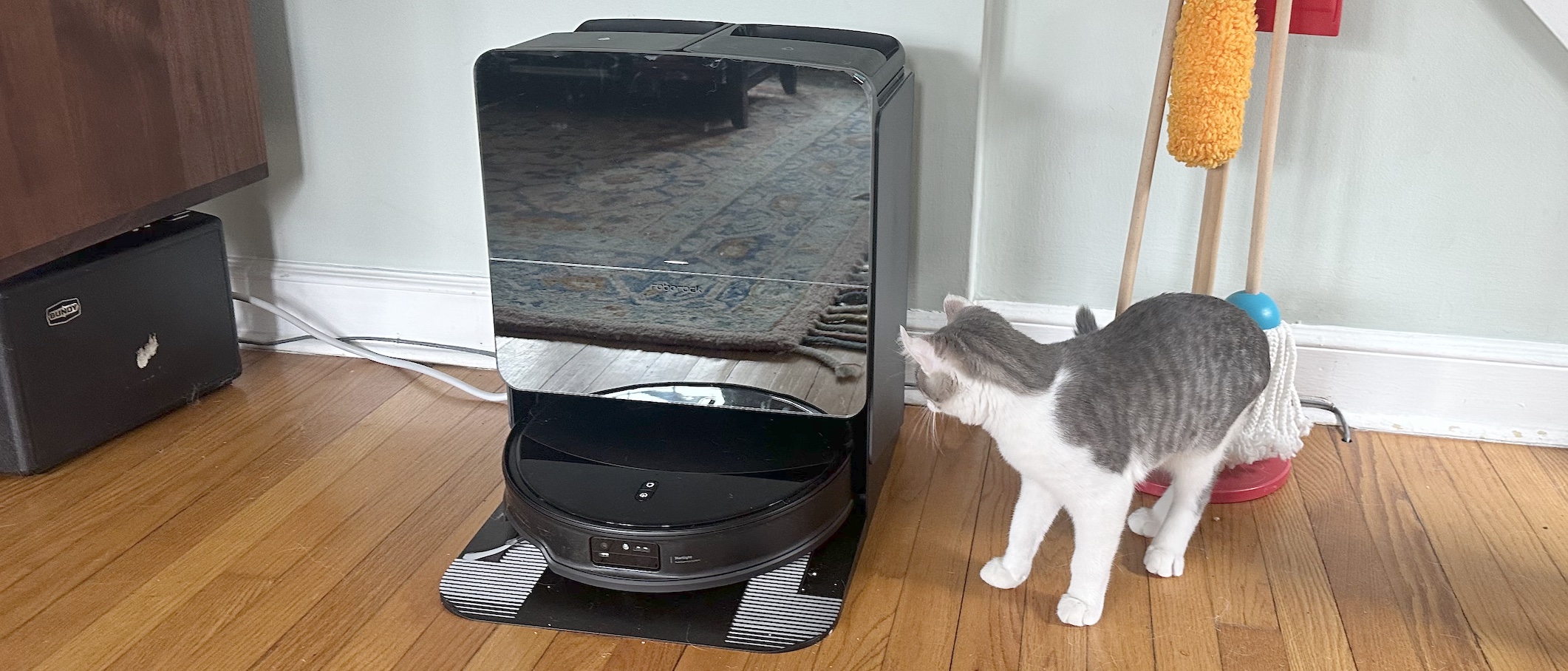Tom's Guide Verdict
The Roborock Saros 10R is one of the most expensive robot vacuums we’ve tested, but it does it all, and it does it all well. It aced our cleaning tests, uses AI to avoid objects, and not only vacuums but mops your floors, too.
Pros
- +
Can lift itself over thresholds
- +
Effective at cleaning and mopping
- +
Built-in camera
- +
Very good at cleaning
Cons
- -
Expensive
Why you can trust Tom's Guide
There are a lot of things that impressed me about the Roborock Saros 10R, but what caught my attention was when it tried to navigate the threshold between my kitchen and living room. As it approached the entryway, it swiveled left and right to survey the scene, moved over a few inches to center itself in the doorway, and then lifted itself up and over to continue its rounds.
Robot vacuums are becoming ever more sophisticated, with ever more smart features and functionality. The Saros 10R is Roborock’s newest top-end model hybrid robot vacuum and mop (not counting the Saros Z70). It features a new low-profile design and vision-based navigation system along with its own voice-based controls. Its base will not only swap out the dirty water in the mop, but also clean and dry the mop heads too. Plus, its camera can be used to keep tabs on your pets.
I tested the Roborock Saros 10R in my home for a few months, and came away very impressed with its performance. Here’s why I think it’s one of the best robot vacuums — provided price is no object.
Roborock Saros 10R review: Price and availability
The Roborock Saros 10R went on sale in early 2025; at the time of this writing, it was $1,599 on Amazon, but you could get it for $1,399 at Roborock’s site.
Roborock also has the Saros 10 — also for $1,599, which in many ways is very similar to the 10R. The main difference between the two is in how they see the world. The Saros 10 relies primarily on a LiDAR camera on the top, which retracts into the body when the robot goes under something with limited clearance. When that happens, the Saros 10’s front camera takes over.
The Saros 10R only has a camera on the front of the vacuum, but it uses Roborock’s AI-powered StarSight Autonomous System 2.0. This system uses RGB cameras and dual-light 3D Time-of-Flight sensors, as well as a wide vertical laser to map its surroundings and avoid objects on the ground.
The Saros 10 has slightly more powerful suction - 22000 pa vs. 19000 in the 10R — as well as a more robust mopping system that vibrates at 4,000 times per minute to better remove stains.
While the 10R comes with two disposable dust bags, you’ll eventually need to purchase more; you can pick up a 6-pack for $31 on Amazon, which is a pretty reasonable price.
Roborock also sells a 16-ounce bottle of cleaning solution for $18 on Amazon, but you could probably get away with using just water, as I did.
Roborock Saros 10R review: Design
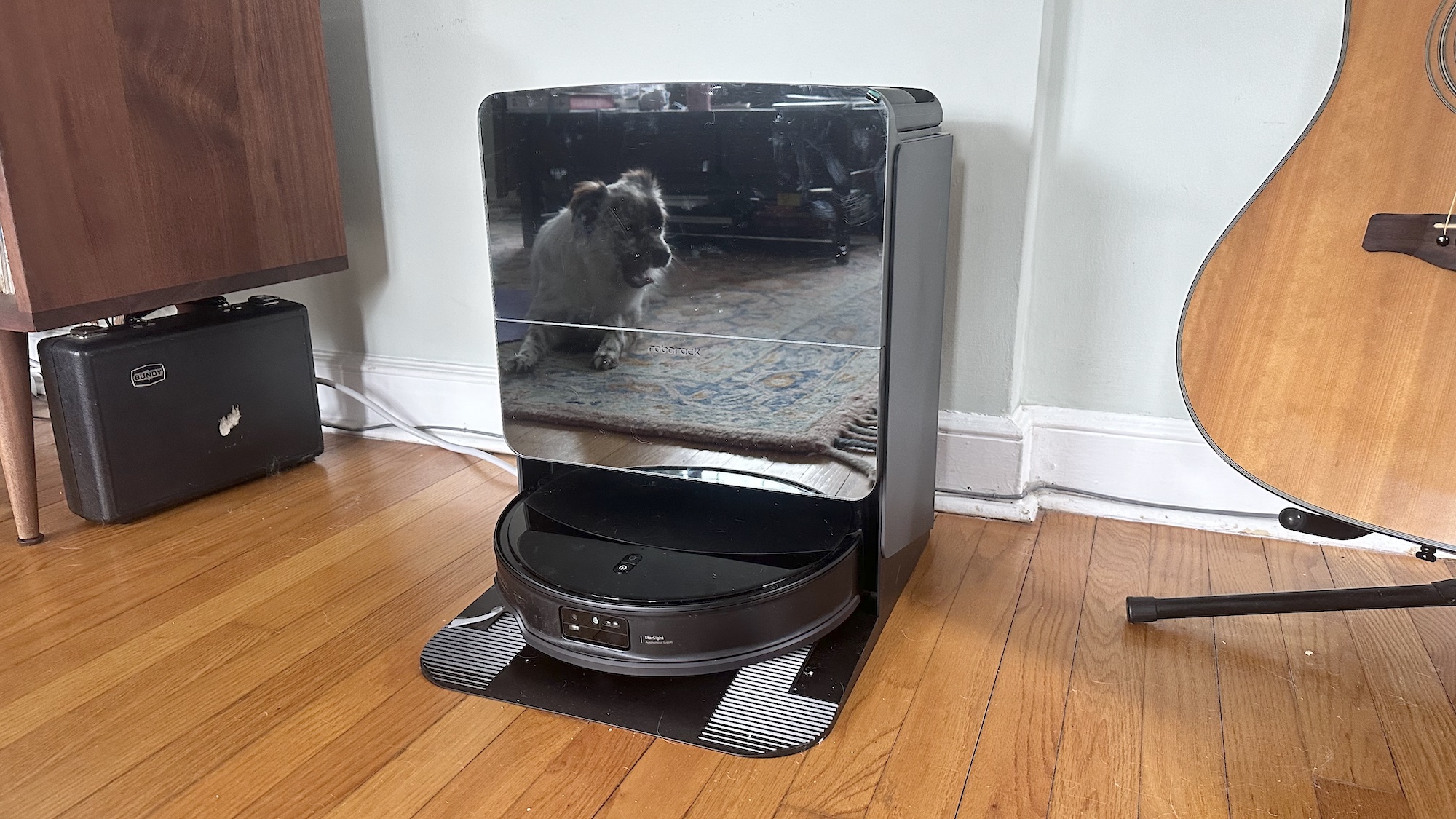
The 10R’s dock has a mirrored front that would look sleek in an otherwise spotless home, but was a magnet for all the stray pet hair in my house. A panel in the front of the dock, just above the vacuum itself, pops off to reveal a cavity for the vacuum bag.
On the top are two removable containers, one for clean water and one for dirty water. They slide in and out easily but securely, and the tops of each container hinge open so you can easily pour the water in and out.
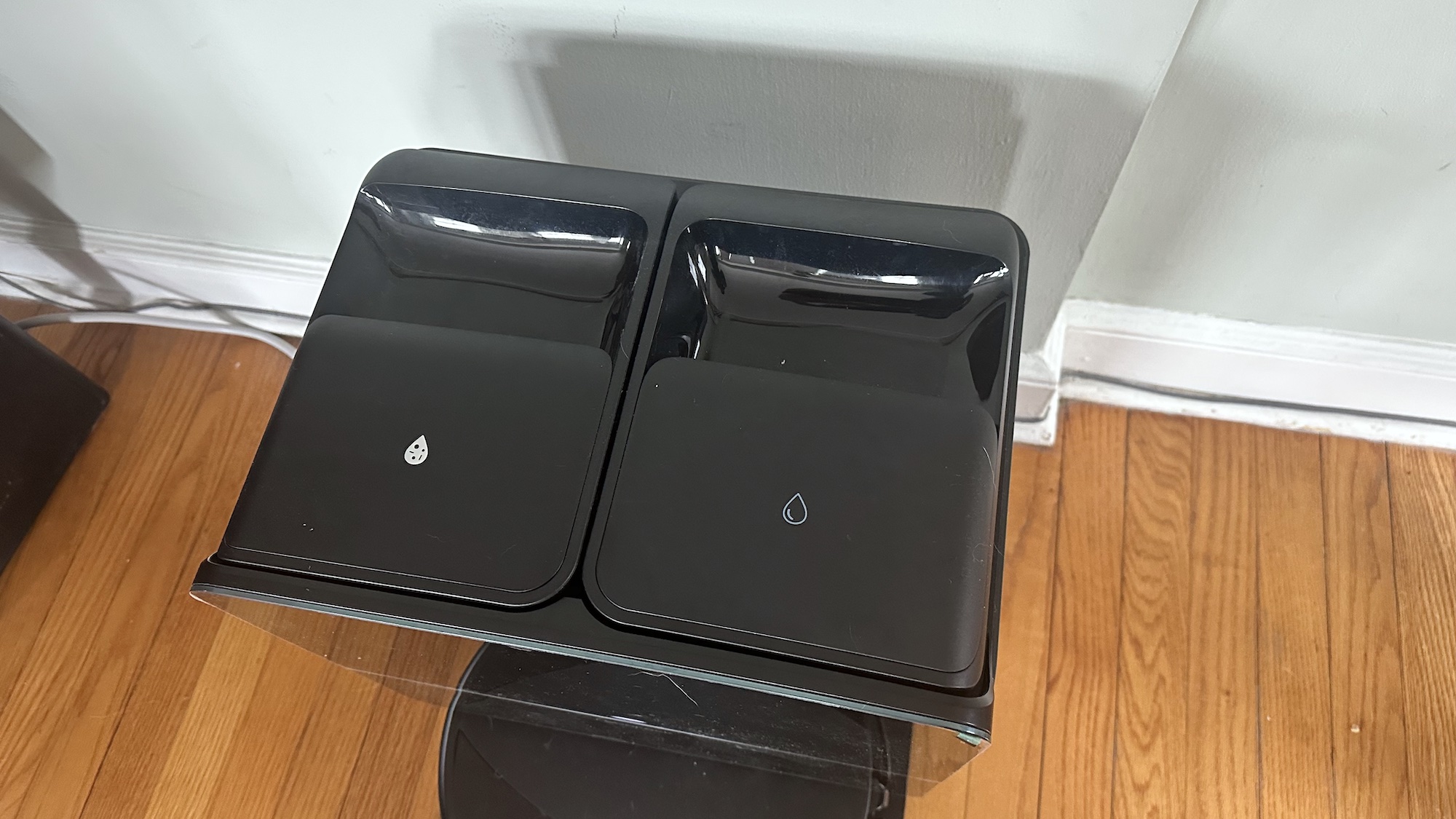
Like most robot vacuum docks that have water containers, the 10R’s dock is fairly large, about the size of six shoeboxes stacked three high and two wide.
I do like that the dock not only clears out the robot vacuum, but it also has a cleaning function for the mops; after each run, the dock will rinse the mop heads and then dry them. You’ll hear a faint humming as it’s going through the process, but it’s so quiet you’d only likely notice it if you were sitting next to the dock.
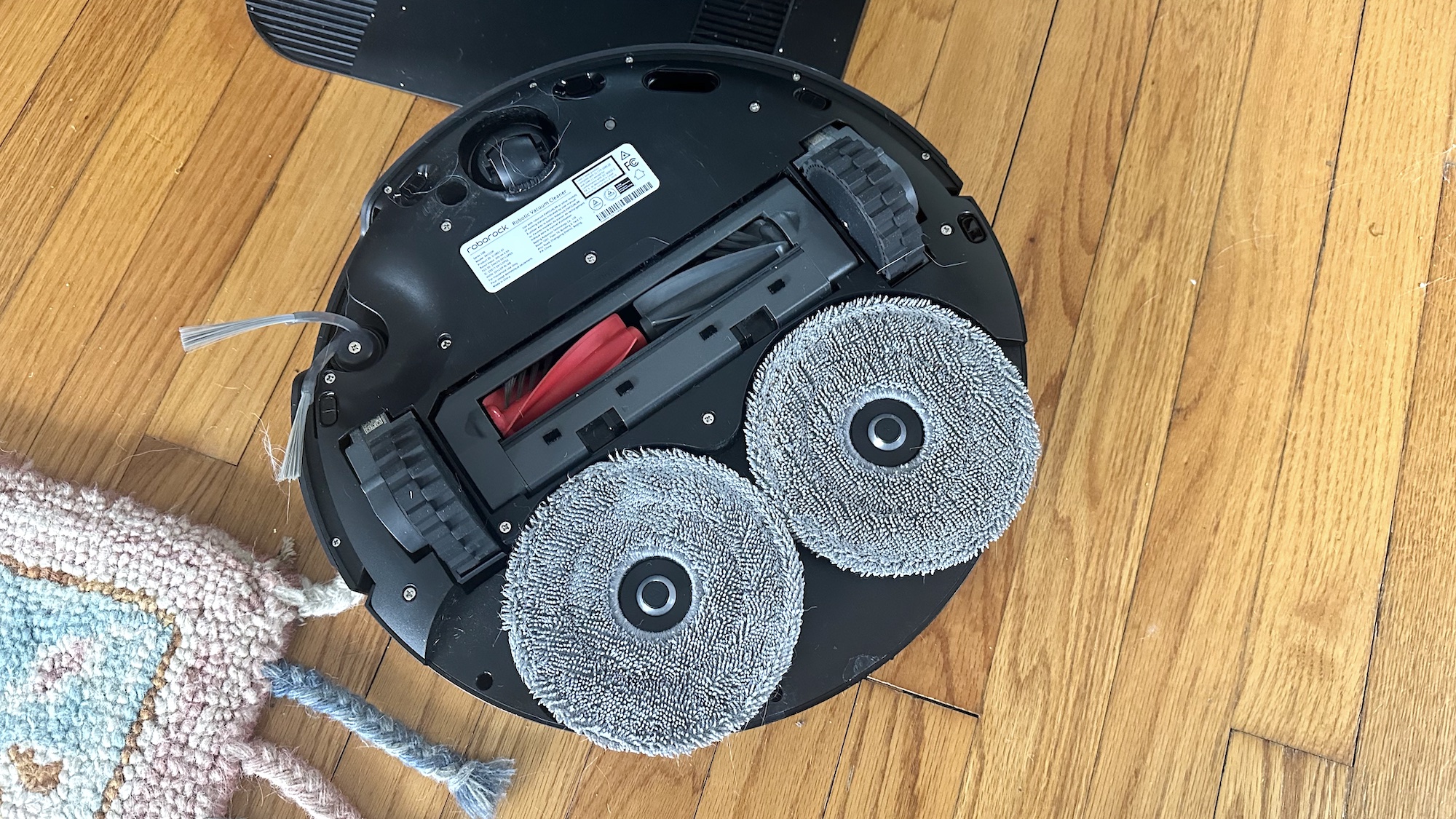
The 10R stands just 3.14 inches tall; it was compact enough to fit under the lip of my refrigerator as well as underneath my radiator cover, a common area for all manner of dust to settle.
The 10R can also surmount rises of up to 1.57 inches; while not as much as the Dreame X50 Ultra, which can lift itself up 2 inches, the 10R was able to get over a 1-inch threshold between my living room and kitchen.
Roborock Saros 10R review: Performance
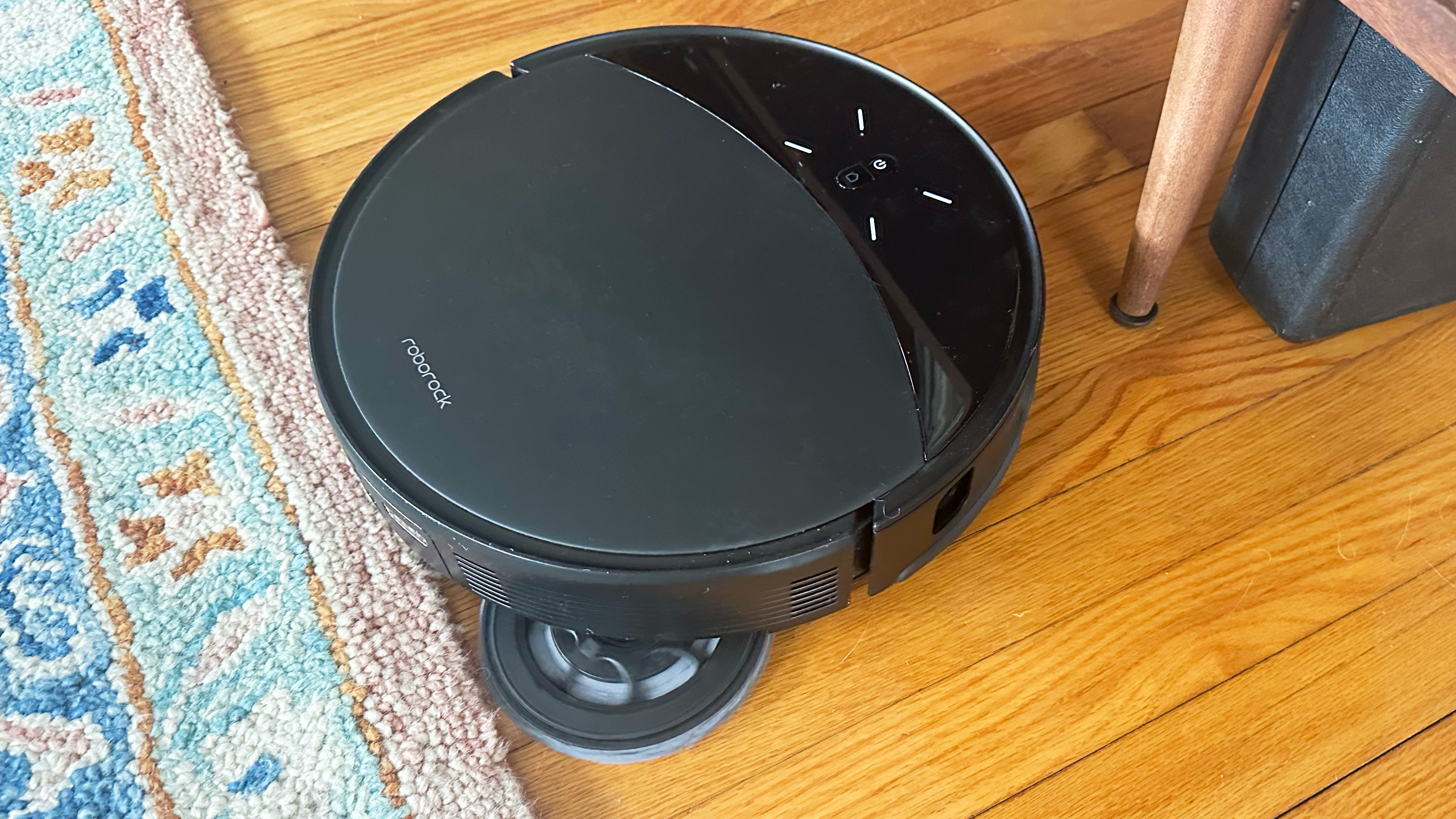
For a robot vacuum to cost as much as the Saros 10R, it better be an excellent cleaner. Fortunately, it exceeded my expectations, both in our lab tests and when roaming my house, picking up after my dog and two cats.
The robot’s vision system and AI recognized a few pieces of furniture — a couch, TV stand, and dining room table — even though the last was in a room the robot couldn’t get to. It also identified other hazards, such as loose cables, and steered clear of them.
The 10R’s right mop head and sweeper brush can extend out the side of the robot, which allows it to get into edges and corners more easily. I admit I was a little skeptical that it could get into every crevice, but it did.
The 10R also handled my tasseled rug fairly well - if one of the tassels got caught in the vacuum, almost all of the time it was able to extract itself, but not before it made a large whirring sound.
Like most robot vacuums with self-emptying bases, the 10R gets pretty loud when the base pulls out all the dirt from the vacuum — it’s as loud as a regular vacuum. Fortunately, this only takes a few seconds.
You can also prevent the 10R from automatically emptying the base using the Do Not Disturb feature in the app; here, you can disable certain features during selected hours of the day. You can’t set different Do Not Disturb schedules for various days, though.
To compare the Saros 10R with other robot vacuums, we tested this model to see how well it would pick up 20 grams of Cheerios, 20 grams of kitty litter, and 2 grams of pet hair on both a 5 x 5-foot carpeted and hardwood area.
| Row 0 - Cell 0 | Cheerios | Kitty litter | Pet hair |
Hardwood | 99 | 100 | 100 |
Carpet | 95 | 99 | 98 |
On carpet, the 10R picked up 95% of all the Cheerios. I have no doubt it would have picked up everything had it turned on its side sweeping brush. However, the robot recognized the room it was in, and, because it wasn’t against an actual wall, it didn’t see the need to use the brush.
The 10R also vacuumed up 99% of all kitty litter — there were a few grains left — and it sucked up 98% of the pet hair, too. In this case, some of the hair was stuck in the space between the rollers and the bin, but this was some particularly knotty, long hair.
On hardwood floors, the 10R did even better, collecting 99% of all Cheerios (literally two pieces of cereal were left) and 100% of both kitty litter and pet hair. Initially, it identified one larger tuft of fur as an object to be avoided, but its side brush eventually collected it.
| Row 0 - Cell 0 | Overall | Cheerios | Kitty Litter | Pet Hair |
Roborock Saros 10R | 98.5 | 97 | 99.5 | 99 |
88.6 | 94.7 | 98.7 | 72.5 | |
94.5 | 99.8 | 91.5 | 92.5 | |
96.8 | 92.5 | 100 | 98 |
The 10R's overall performance was tops among the robot vacuums we've reviewed as of late; while it didn't do as well as the Shark PowerDetect when it came to Cheerios, it more than made up for it with kitty litter and pet hair. The only robot vacuum to come close was the iRobot Roomba S9+.
Roborock Saros 10R review: App and smart home compatibility
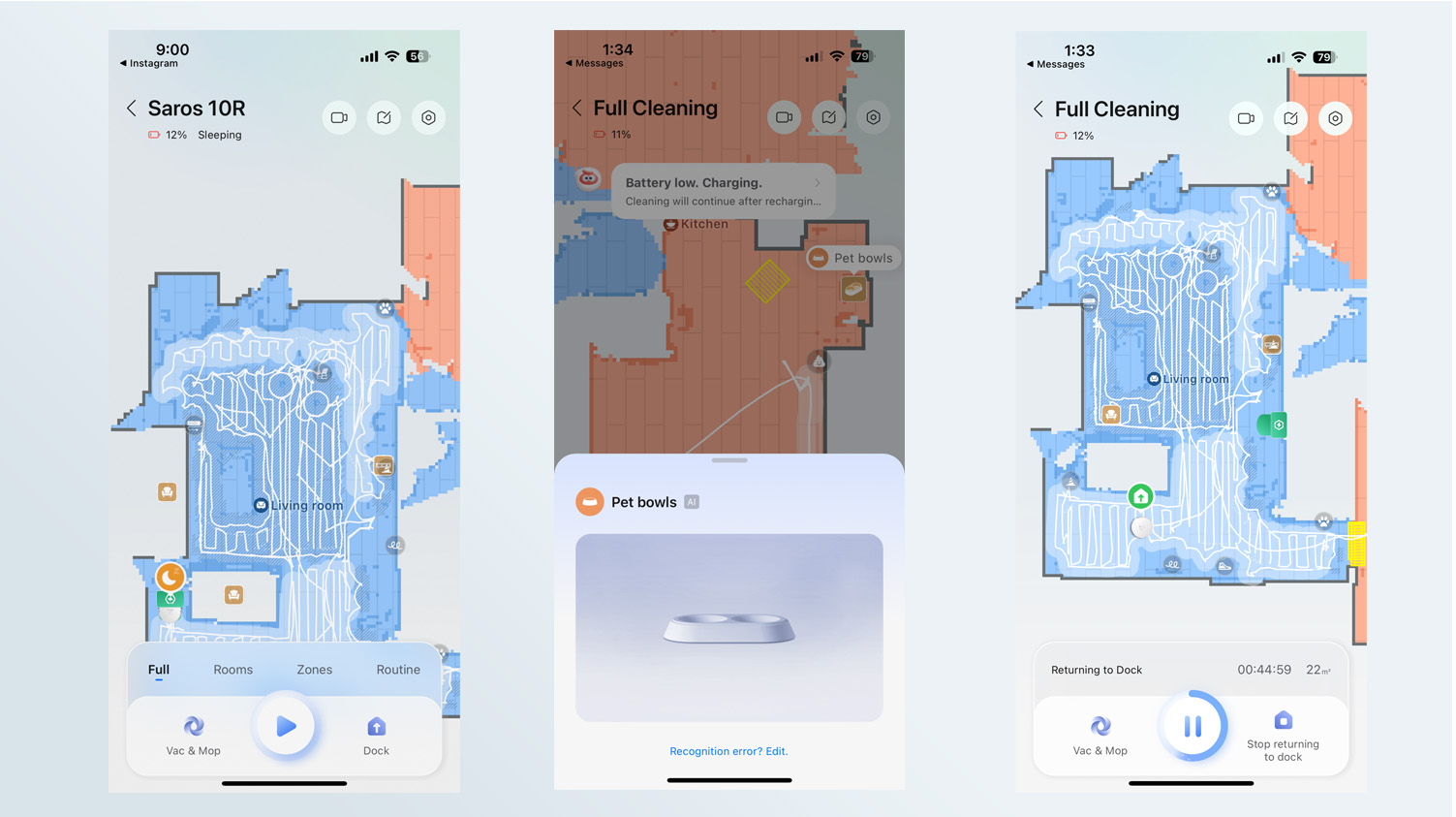
While you can connect the robot to Alexa, Google Assistant, and Siri, the Saros 10R has its own built-in voice assistant, so you can use voice commands to control the robot even if it’s not connected to the Internet.
Instead of saying “Hey Siri” or “Alexa,” you say “Hello Rocky,” followed by the command of your choice. There are a large number of commands you can give it — from specific room cleaning to changing the intensity of the mop — so it’s nice that Roborock includes a printed-out card with the commands, and lists them all in the app.
Be careful where you place it, though; I initially set it up near our TV, and occasionally, whatever was being said on-screen would trigger the 10R, and we’d suddenly hear a chirpy “Hello, I’m listening!”
The Roborock app has an impressively exhaustive set of menus for changing the settings of just about every aspect of the 10R and its dock. While there’s a lot of things you’ll probably never have to change, you could easily spend half an hour or more (as I did) exploring the various settings.
A few things I did change: In the Reactive Obstacle Avoidance menu, I turned on the option for the 10R to take photos of my pets — who wouldn’t want that? — as well as any obstacles it encountered. While my cats and dog were too shy to show themselves to the robot, the 10R did identify a very cat-like pillow as a feline, and snapped a picture of it.
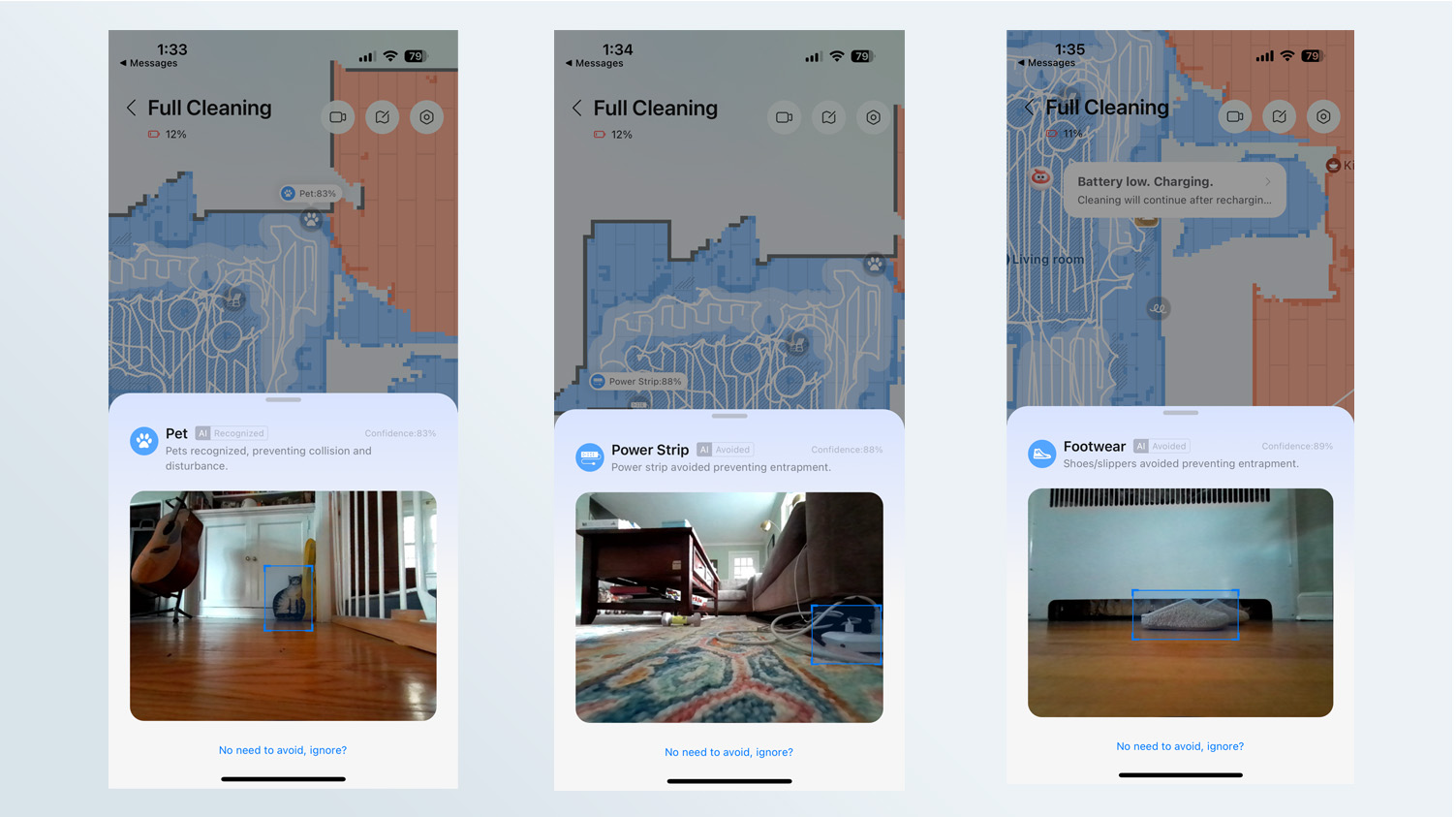
The 10R also accurately recognized power strips, shoes, pet bowls, and a wire running along the baseboard, and avoided them during its rounds. However, the photos it takes are pretty low-quality, so it’s nothing you’d want to frame.
You can also create individual maps for each floor of your home, modify the rooms, add furniture, no-go zones, and more. It’s all pretty intuitive.
Roborock’s app also uses an AI to analyze your home and come up with a cleaning plan. However, when I tried to use it, the SmartPlan seemed to get stuck in a loop trying to come up with a plan.
A Maintenance tab in the app also shows you the remaining lifespan of components such as the filter and brushes, and lets you know when you need to wipe down the 10R’s sensors.
Roborock Saros 10R review: Verdict
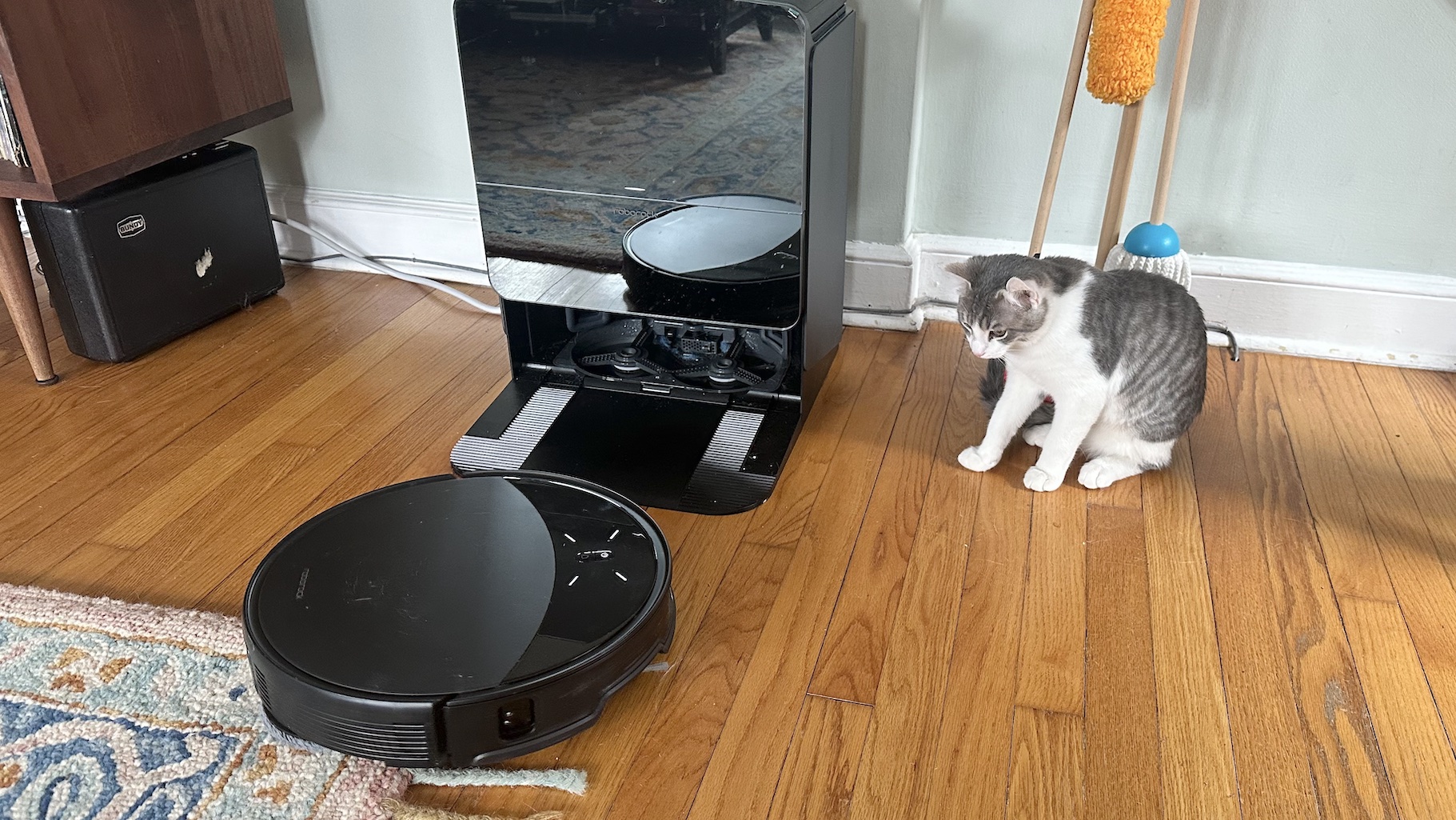
At $1,599, the Roborock Saros 10R is one of the priciest robot vacuums we’ve ever tested. By comparison, iRobot’s flagship model — the Roomba Max 10 Combo — is $1,399 (and you can find it for less), the Ecovacs Deebot X8 Pro Omni is $1,299, while the Shark PowerDetect 2-in-1 is even less, at $999.
However, the Saros 10R was far superior to the Ecovacs, especially when it came to vacuuming pet hair, and it also outperformed the Shark. Not only is this one of the best robot vacuums, but it also proved its worth as one of the best robot vacuums for pet hair.
Apart from its performance, I also liked its design — the 10R was both sleek and easy to use and maintain. It was also wickedly smart, intelligently recognizing various objects to avoid, lest they become entangled in the 10R’s brushes.
There is something to be said for the best cheap robot vacuums, but if you can afford the investment, the Roborock Saros 10R could be the one to get.

Michael A. Prospero is the U.S. Editor-in-Chief for Tom’s Guide. He oversees all evergreen content and oversees the Homes, Smart Home, and Fitness/Wearables categories for the site. In his spare time, he also tests out the latest drones, electric scooters, and smart home gadgets, such as video doorbells. Before his tenure at Tom's Guide, he was the Reviews Editor for Laptop Magazine, a reporter at Fast Company, the Times of Trenton, and, many eons back, an intern at George magazine. He received his undergraduate degree from Boston College, where he worked on the campus newspaper The Heights, and then attended the Columbia University school of Journalism. When he’s not testing out the latest running watch, electric scooter, or skiing or training for a marathon, he’s probably using the latest sous vide machine, smoker, or pizza oven, to the delight — or chagrin — of his family.
You must confirm your public display name before commenting
Please logout and then login again, you will then be prompted to enter your display name.
